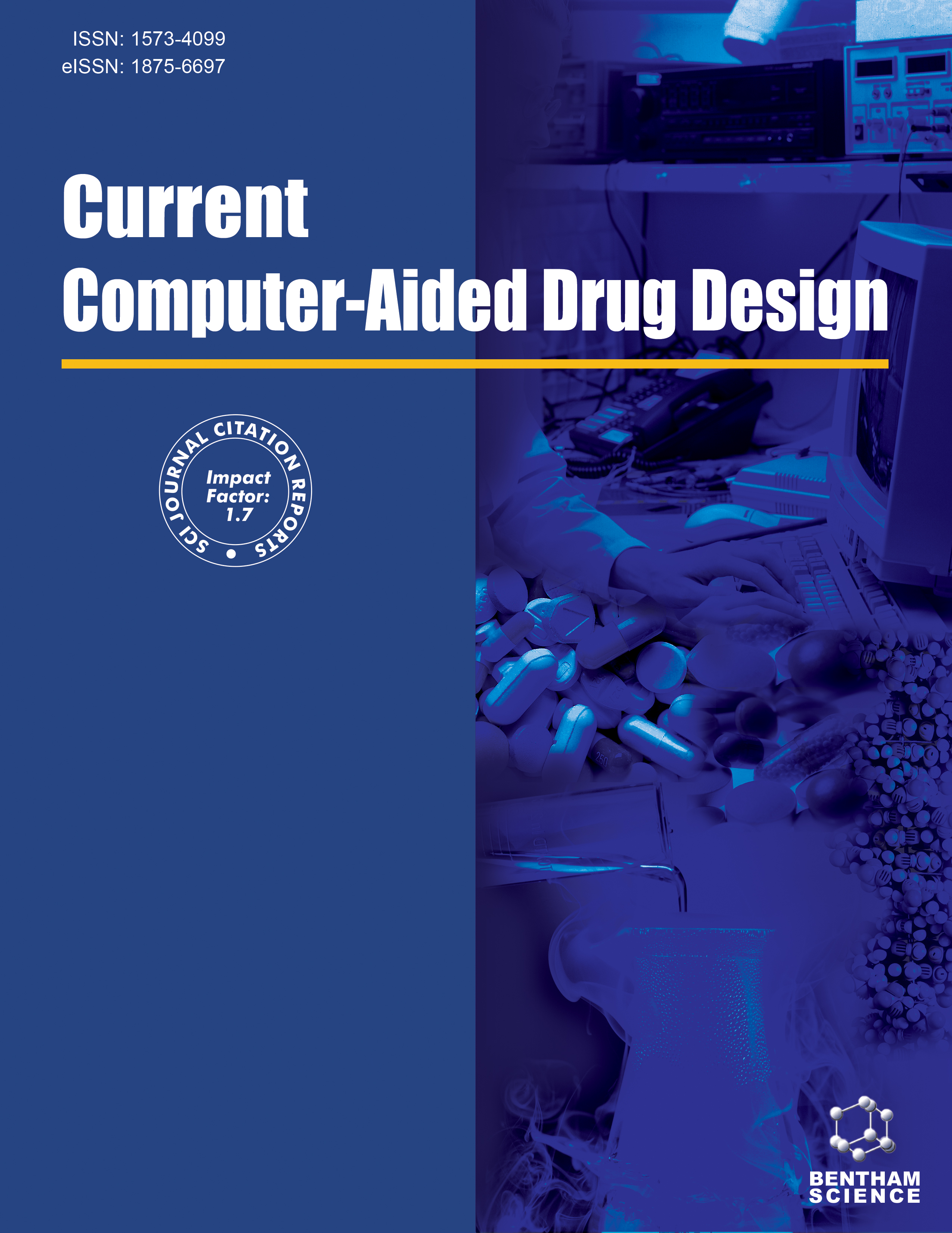- Home
- A-Z Publications
- Current Computer - Aided Drug Design
- Previous Issues
- Volume 1, Issue 4, 2005
Current Computer - Aided Drug Design - Volume 1, Issue 4, 2005
Volume 1, Issue 4, 2005
-
-
Computational ADME/Tox Modeling: Aiding Understanding and Enhancing Decision Making in Drug Design
More LessAuthors: Robert K. Delisle, Jeffery F. Lowrie, Doug W. Hobbs and David J. DillerWith recent estimates of drug development costs on the order of $800 million and increased pressure to reduce consumer drug costs, it is not surprising that the pharmaceutical industry is keenly interested in reducing the overall expense associated with drug development. An analysis of the reasons for attrition during the drug development process found that over half of all failures can be attributed to problems with hum Read More
-
-
-
Computer-Aided Drug Design for Typical and Atypical Antipsychotic Drugs: A Review of Application of QSAR and Combinatorial Chemistry Methods - Tools for New Antipsychotics Design
More LessAuthors: S. Avram, A.- L. Milac and M. L. FlontaThe central nervous system (CNS) is endowed with very efficient protection mechanisms. However, the same mechanisms that protect it, sometimes can be an enemy for therapeutic applications. In this way, many antipsychotic drugs used, are ineffective in the treatment of cerebral diseases such as schizophrenia. Many typical and atypical neuroleptics are very efficient against the positive symptoms, but not against t Read More
-
-
-
In Silico ADME Prediction: Data Sets and Models
More LessThe models available in the literature for the in silico prediction of ADME (absorption, distribution, metabolism, excretion) properties, as well as the data sets used to derive them, are reviewed. Special emphasis is given to describe the latest and most complete models, with the largest and most diverse data sets. Models for human intestinal absorption, oral bioavailability, plasma protein binding, blood-brain barrier permeation, P Read More
-
-
-
Computational Chemistry, Informatics, and the Discovery of Vaccines
More LessPerhaps the most exciting sub-discipline within Bioinformatics is the application of informatic methods to immunology. Immunoinformatics, which combines informatics with computational chemistry, is facilitating important change within immunology. As it frees itself from the empirical straight jacket that has characterised its development, immunoinformatics is helping immunology to engage fully with the dynamic post-genomi Read More
-
-
-
A Computational and Experimental Analysis of Ligand Binding to Type 1 Collagen
More LessAuthors: J. Vaidyanathan, T. K. Vaidyanathan, N. Ramasubbu and S. RavichandranType 1 collagen is the primary protein in extracellular matrix of major tissues. Ligand binding to type 1 collagen is therefore an important problem of interest in areas such as adhesive bonding to tissues, mineralization of collagen scaffolds etc. The triple helical structure of collagen molecule, and the selfassembly of these molecules into fibrils as well as the role of water in its conformational state present interesting challenges Read More
-
-
-
The Challenge of Considering Receptor Flexibility in Ligand Docking and Virtual Screening
More LessAuthors: Claudio N. Cavasotto, Andrew J.W. Orry and Ruben A. AbagyanComputational ligand docking and screening is widely employed throughout the pharmaceutical industry to speed up the drug discovery process and identify drug candidates from very large pools of virtual compound libraries. When a ligand interacts with a receptor a number of structural changes within the ligand binding site might occur. It is therefore critical for these methods to accurately predict, or otherwise take into Read More
-
Volumes & issues
-
Volume 21 (2025)
-
Volume 20 (2024)
-
Volume 19 (2023)
-
Volume 18 (2022)
-
Volume 17 (2021)
-
Volume 16 (2020)
-
Volume 15 (2019)
-
Volume 14 (2018)
-
Volume 13 (2017)
-
Volume 12 (2016)
-
Volume 11 (2015)
-
Volume 10 (2014)
-
Volume 9 (2013)
-
Volume 8 (2012)
-
Volume 7 (2011)
-
Volume 6 (2010)
-
Volume 5 (2009)
-
Volume 4 (2008)
-
Volume 3 (2007)
-
Volume 2 (2006)
-
Volume 1 (2005)
Most Read This Month
Article
content/journals/cad
Journal
10
5
false
en


